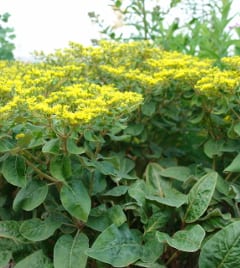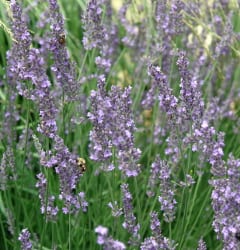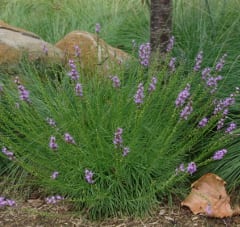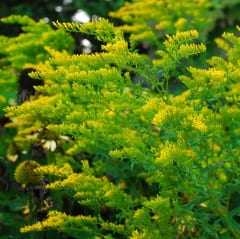by Kevin Staso
If you listen to nightly news reports or read articles in Nature, The Journal of Ecology or The American Meteorological Society, the frequency and severity of drought in the United States seems unavoidable, despite being more predictable. Headlines like “Drought Monitor shows record-breaking expanse of drought across United States” from 2012 and “Extreme Drought Is Causing Land in the Western U.S. To Rise Upward” posted in Popular Science August 2014 can portray inevitable doom. The essential question is “What can we do to adapt to these foreseeable conditions?”
First, let’s forget about which side of the fence you’re on with respect to climate change. Droughts occur whether the earth is warming or not. Droughts are foreseeable and virtually uncontrollable. Drought conditions develop because of changes in intense weather patterns. These patterns exist as storm tracks are steered away from a geographic region for an extended period of time. These changing weather patterns generally create stationary high-pressure zones which restrict moisture. The results ultimately create adverse agricultural, hydrological, and socio-economic conditions that impact our daily lives, and sometimes even entire cultures. Yet when these naturally occurring, historical conditions develop, we spend more time debating issues like global warming, rather than developing adaptive strategies to cope with drought conditions or lessen the impact of future occurrences.
Beautiful Landscapes Can Withstand Drought
What will the future hold? Will drought be the momentous downfall of society? Not likely, but our current approach and philosophy towards recognizing the impacts of drought should influence the landscapes we design and install. Until now, educating clients about drought resistant landscapes was often met with a collective sigh. Far too often the perception of these landscapes consisted of a very limited plant palette of Sedums, ornamental grasses, tropical and non-hardy plants. However, I like to believe designers know there is more to life than Sedum ‘Autumn Joy’ and Calamagrostis ‘Karl Foerster.’
Today we have a wealth of ornamental, vegetative solutions to recommend and install. The problem often lies in the way we install them. We plant on 18-36” centers and fail to offer supporting vegetation to cool plants’ root systems, build soil horizons, conserve moisture, suppress weeds or provide competition against invasive seedlings. We rely on mulch to “serve” this function. By forcing plants into solitary confinement our landscapes are often programmed to fail. Can we utilize a better strategy to minimize inputs, suppress weeds, and conserve water? I believe we can.
In the 1980s we talked about Xeriscaping. But far too few paid attention to the principles of this approach. Often, because of the proposed plant palettes (Sedums, Sempervivums, Stachys, etc.) this style of planting was dismissed because it became accepted exclusively for arid and semiarid regions – and by definition, rightfully so. Imagine if the country had been a bit more attentive to this methodology and moved toward installing plantings more favorable to water conservation.
Natural Plant Community Based Design
Thankfully the current trend (and research) is more focused on water conservation. In the 1990s and 2000s it began with the implementation of Best Management Practices (BMP) and Low Impact Design or Development (LID) and has evolved into a more comprehensive approach known as Natural Plant Community Based Design.
Simply put, Natural Plant Community Based Design is a methodology, a practical integration of ecological services on a site, and embraces principles of the natural world. It values aesthetics, but puts vegetative establishment, coverage, competition, and function above all else. Reduction of horticultural inputs and maintenance, as well as enhanced ecological services, are short and long term goals. Enriched biodiversity and water conservation are benefits, not only to the site itself, but to the ecosystem.
Though fairly new to the United States, this pragmatic approach has been studied in Europe for decades. James Hitchmough and Nigel Dunnet of the University of Sheffield in the UK, along with Noel Kingsbury and others have conducted extensive research to evolve their approach in Europe. In his 2008 article on urban plant community based designs, “New approaches to ecologically based, designed urban plant communities in Britain: Do these have any relevance in the United States” (Hitchmough, J. (2008) Cities and the Environment 1(2): article 10, 15 pp.), Hitchmough makes the argument that the use of both native and non-native vegetation is relevant in these designs and should and can be considered. Doing so expands our plant palette in order to help us achieve the overall desired aesthetic. Further, Hitchmough states, “The geographical origin of the plants used in these communities varies according to the physical, ecological, and cultural context in which they are to be used.” In other words, understanding how a plant grows, how it competes, and/or how it evolves in the landscape, should drive our plant selection process. Basing our choices on site conditions, environmental influences, and how a plant matures should ultimately define a plant’s function in the landscape. Doing so builds stronger, more resilient landscapes.
Plant Choices that Conserve Resources
So as you make selections for your next planting plan, I have suggestions for a few resilient plants to improve biodiversity, reduce inputs and maintenance, and conserve water. Oh, and they happen to be quite ornamental to boot. Enjoy!
 Eriogonum allenii ‘Little Rascal’
Eriogonum allenii ‘Little Rascal’
Shale Barrens Buckwheat
With a common name like this, you know this puppy conserves water. This beautiful long flowering workhorse is a durable plant which thrives in urban plantings, rock gardens or any consistently dry site. With a tidy, low-growing habit of gray-green paddle-shaped leaves, it bursts with golden yellow umbels which age to various shades of bronzy orange in the late summer. A wonderful little plant at 18-24” tall, it provides habitat and nectar for butterflies, honey bees, bumble bees and hummingbirds! It is also a great selection for those who enjoy cut flowers.
 Lavandula x intermedia ‘Phenomenal’ PPAF
Lavandula x intermedia ‘Phenomenal’ PPAF
Phenomenal Lavender
When a plant has a name like ‘Phenonmenal’ you tend to be wary. Not with this one. It truly lives up to the hype. This uniform plant is extremely tolerant of heat and humidity with superior winter survival and hardiness to zone 5. This selection also resists common root and foliar diseases. With remarkable fragrance and flower presentation above uniform mounds of silvery foliage in spring and summer, it is truly ‘Phenomenal’ for water conservative landscapes. For clients who appreciate dried flower arrangements, oils, and culinary delights – this long lived Lavandula is perfect for their perennial border.
 Liatris microcephala
Liatris microcephala
Dwarf Blazing Star
An exceptional compact (14” in flower) native species with fine-textured, deep green, grassy leaves, Dwarf Blazing Star sends up numerous spikes of tassel-like rosy purple flowers in July through September. Unique to this species the flowers open from the top to the bottom of the spike. This irresistible plant is extremely drought tolerant and perfect for urban plantings, green roofs and other tough dry sites.
 Solidago odora
Solidago odora
Anise Scented Goldenrod
Not all goldenrods are created equal. This particularly wonderfully native gives off an anise scent when its foliage is crushed – reminiscent of licorice candy! With a tidy, clump-forming habit, it debunks the idea that all goldenrods are weedy or aggressive in the garden. Its high ecological value attracts butterflies, bees, ladybugs, lacewings and other beneficial insects. S. odora is a valuable addition to any urban planting, wildflower garden, meadow or natural border in full sun, and dry locations. It will also grow in light shade. This plant performs well in sandy soils but tolerates clay soils, and is proven to be exceptionally drought tolerant.
About the Author
Kevin Staso is Sales Director for North Creek Nurseries in Landenberg, PA, where he develops regional and national native plant programs for wholesale growers and retailers. His responsibilities also include sustaining North Creek’s position as the preferred supplier of Landscape Plugs™ to the landscaping, engineering, watershed, municipal, and conservation communities throughout North America. Kevin holds a BS degree from UNC Greensboro, is a member of Pennsylvania’s Storm Water Technical Review Council’s Vegetation Advisory Committee, and serves on the Board of Directors of the Ecological Landscape Alliance.

